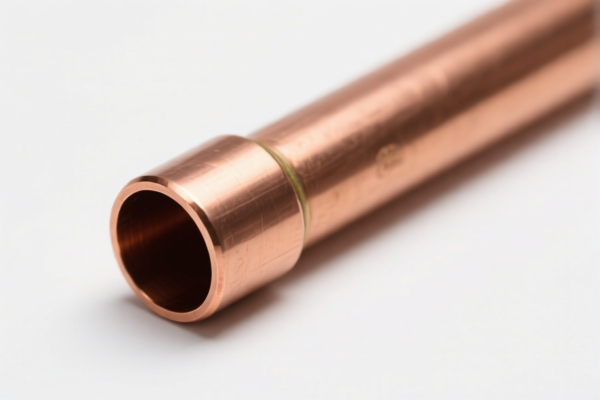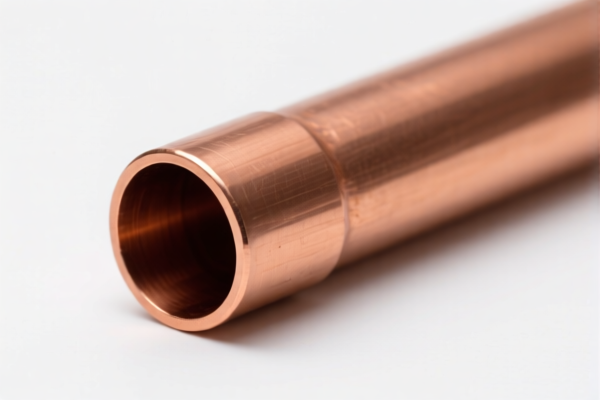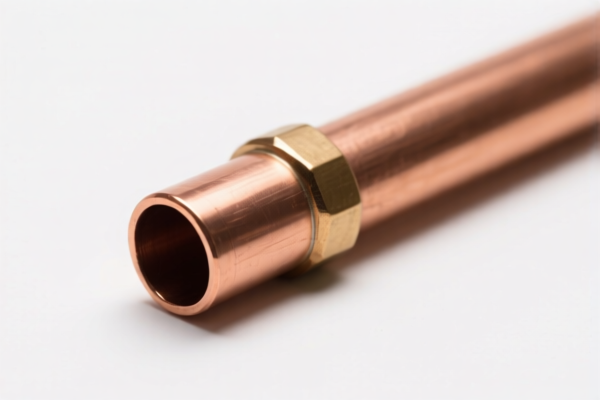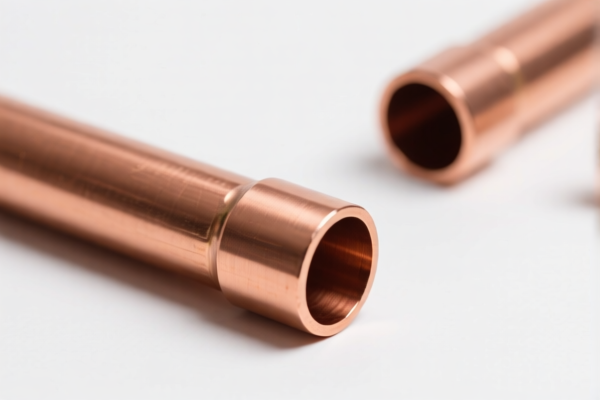| HS Code | Official Doc | Tariff Rate | Origin | Destination | Effective Date |
|---|---|---|---|---|---|
| 7412100000 | Doc | 58.0% | CN | US | 2025-05-12 |
| 7411101030 | Doc | 56.5% | CN | US | 2025-05-12 |
| 7411105000 | Doc | 58.0% | CN | US | 2025-05-12 |
| 8307903000 | Doc | 58.8% | CN | US | 2025-05-12 |
| 8307906000 | Doc | 58.8% | CN | US | 2025-05-12 |
| 8311900000 | Doc | 55.0% | CN | US | 2025-05-12 |




Copper Pipe Joint
A copper pipe joint is a connection point between two or more sections of copper piping, typically used in plumbing, heating, and cooling systems. These joints are valued for their durability, corrosion resistance, and ability to handle high pressures and temperatures.
Materials
The primary material is copper, typically types L, K, or M, differentiated by wall thickness and pressure rating:
- Type K: Thickest wall, highest pressure rating, often used for underground applications and demanding services.
- Type L: Intermediate wall thickness and pressure rating, most common for interior water distribution.
- Type M: Thinnest wall, lowest pressure rating, suitable for lower-pressure applications.
- Solder: Lead-free solder is now standard for potable water systems due to health concerns. Older systems may use lead-based solder.
- Flux: A chemical agent used to clean the copper surfaces and promote solder flow.
Purpose
The primary purpose is to create a watertight and gas-tight seal between copper pipes, enabling the safe and efficient transport of fluids (water, gas, refrigerant) and gases.
Function
The function relies on metallurgical bonding between the copper pipes and the solder. The solder, when heated, melts and flows into the joint, filling the gap and creating a strong, leak-proof connection upon cooling. The flux prevents oxidation during heating, ensuring proper solder adhesion.
Usage Scenarios
- Potable Water Systems: Residential and commercial plumbing for hot and cold water distribution.
- Heating Systems: Hydronic heating systems (baseboard, radiant floor) using hot water or glycol mixtures.
- Refrigeration Systems: Connecting refrigerant lines in air conditioning and refrigeration units.
- Gas Lines: Connecting natural gas or propane lines (requires specialized fittings and techniques).
- Medical Gas Systems: Applications requiring high purity and reliability.
Common Types
- Sweat Joints (Soldered Joints): The most common method. Pipes are cleaned, fluxed, fitted together, and heated with a torch to melt solder around the joint.
- Compression Joints: Use compression fittings that tighten around the pipe using a nut and compression ring, creating a seal without soldering. Suitable for repairs and situations where soldering is not feasible.
- Flare Joints: The pipe end is flared to create a cone shape, which is then fitted into a flare fitting and tightened. Used for refrigerant lines and gas lines.
- Push-Fit Joints: Utilize a mechanism to grip the pipe securely when inserted. Quick and easy to install, but generally more expensive.
- Grooved Joints: Pipes are grooved and secured with a mechanical coupling. Used for larger diameter pipes in commercial applications.
- Capillary Joints: Similar to sweat joints but uses a capillary action to draw solder into the joint, often used for smaller diameter pipes and precise connections.
Copper pipe joints are fittings used to connect copper tubes or pipes. Based on the provided information, the following HS codes may be applicable:
- 7412100000: This HS code covers copper tube or pipe fittings, specifically those made of refined copper. This includes couplings, elbows, and sleeves. The base tariff is 3.0%, with an additional 25.0% surcharge, increasing to 30% after April 2, 2025, resulting in a total tariff of 58.0%.
- 7411101030: This HS code applies to copper tubes and pipes made of refined copper, specifically seamless tubes with an outside diameter of 6 mm or more but not exceeding 16 mm, supplied in coils on spools. The base tariff is 1.5%, with a 25.0% surcharge, increasing to 30% after April 2, 2025, for a total tariff of 56.5%. While this code refers to tubes, the joints may be manufactured from the same material as these tubes.
- 7411105000: This HS code covers other copper tubes and pipes made of refined copper. The base tariff is 3.0%, with a 25.0% surcharge, increasing to 30% after April 2, 2025, resulting in a total tariff of 58.0%. This is a broader category that could apply if the pipe joints don't fall under the more specific 7411101030 code.
According to the provided reference material, the HS code options related to 'copper pipe joint' are limited, with only the following 3 found.
Customer Reviews
No reviews yet.